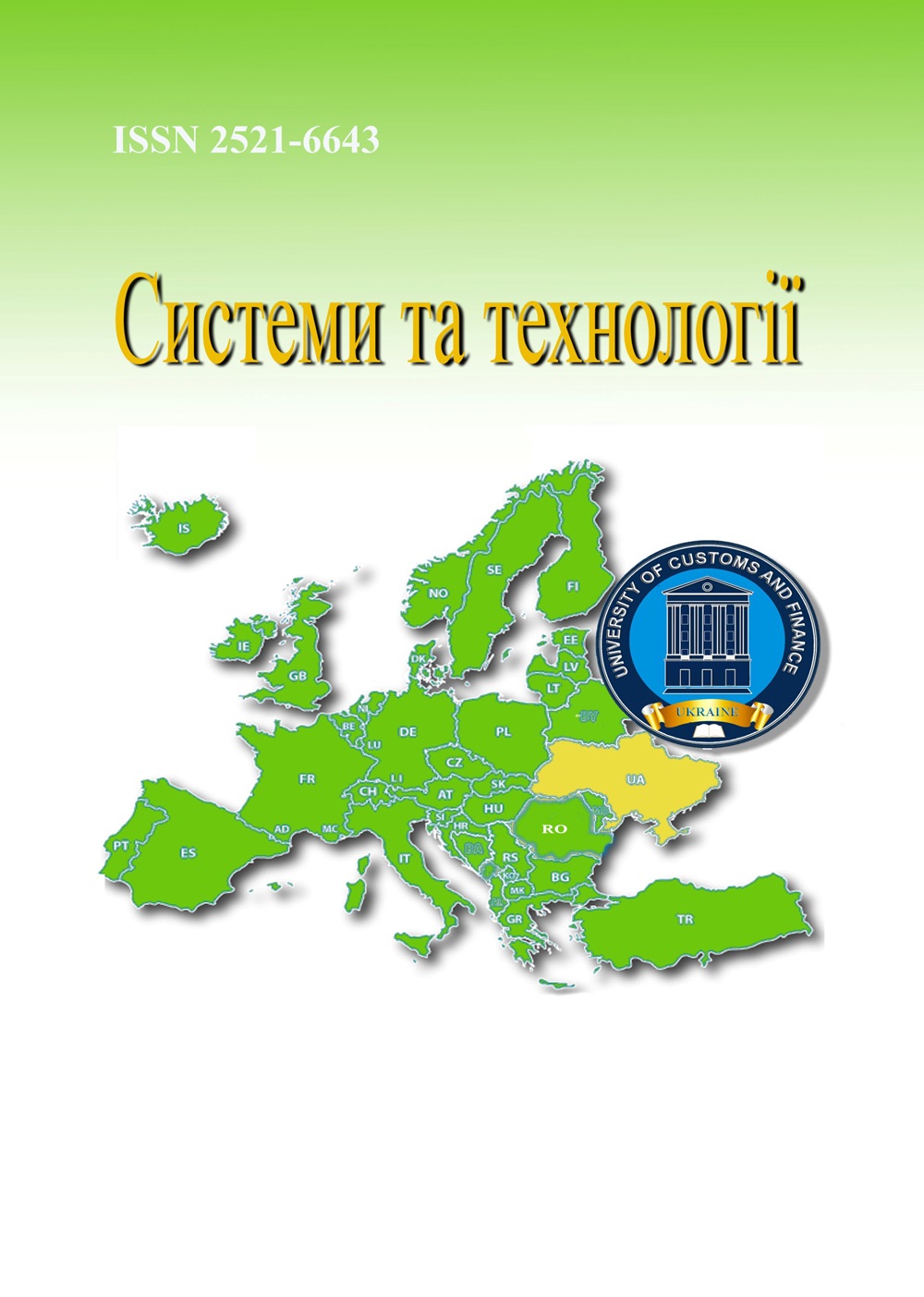BROADBAND RECTANGULAR HORN ANTENNA WITH DIELECTRIC LENS FOR POINT-TO-POINT WIRELESS COMMUNICATION
Abstract
Modern information technologies are developing rapidly. The application of the Internet of Things and sensor networks requires the development of new frequency ranges. At the same time, there is a tendency for rapid transition from the decimeter range to the centimeter range of wavelengths. Today, there is an urgent scientific and practical task of creating new antenna devices for use in wireless information communication and sensor networks with point-to-point wireless communication. Antennas are an extremely important component of wireless information communication and sensor network devices. To ensure high-quality wireless communication, an important role is played by the shape of the amplitude pattern, which determines the directional properties of the antenna. The level of information signals and the possibility of spatial separation of channels depends on the quality of the antenna parameters agreement in the operating frequency range. Also, the energy efficiency of information communication devices significantly depends on the magnitude of the directional properties of the antenna. The object of research in the paper is the process of electromagnetic wave radiation and directional properties of a rectangular horn antenna with a dielectric lens in single-mode operation. The proposed broadband rectangular horn antenna with a dielectric lens has a classic geometric configuration and operates in the frequency band 4285.7 MHz – 8571.4 MHz. Its dimensions are width 318 mm, height 240 mm, length 320 mm. The antenna is excited by a probe exciter in the form of an asymmetric pin. The antenna is powered by a coaxial cable with a wave resistance of 75 Ohms. In addition to the basic H10-type wave, many higher types of electromagnetic waves are excited near the pin. All excited higher types of waves are in the closed mode of operation of the rectangular waveguide and decay exponentially as they propagate to the horn. Their amplitude decreases more than 100 times. Therefore, higher types of waves do not pass through the throat of the horn and do not reach the opening of the horn in which the dielectric lens is located. As a result of research, it was established that in the operating frequency range of 6.5 GHz ... 7.6 GHz, the width of the antenna's directional pattern varies within the following limits: 2θE 0.5 = 8.14º...9.75º; 2θH 0.5 = 6.2º...7.2º. The coefficient of directional action of the antenna in the working frequency range is within 490-370 times, and its power gain varies within 26.55-26.0 dB.
References
2. Wang J., Lin H., Yang F., Xu G., Ge J. Design of 94GHz Dual-Polarization Antenna Fed by Diagonal Horn for Cloud Radars. IEEE Access. 2022. Vol. 10, pp. 22480–22486. DOI: 10.1109/access.2022.3154483
3. He Y., Zhao X., Zhao L., Fan Z., Wang J.-K., Zhang L., Ni C., Wu W.-J. Design of Broadband Double-Ridge Horn Antenna for Millimeter-Wave Applications. IEEE Access. 2021. Vol. 9, pp. 118919–118926. DOI: 10.1109/access.2021.3107914
4. Huang S., Chan K. Y., Wang Y., Ramer R. High Gain SIW H-Plane Horn Antenna with 3D Printed Parasitic E-Plane Horn. Electronics. 2021. Vol. 10, Issue 19, p. 2391. DOI: 10.3390/electronics10192391
5. Wang P., Wu Q., He R.-B., Luo W. Gain and Radiation Pattern Enhancement of the H-Plane Horn Antenna Using a Tapered Dielectric Lens. IEEE Access. 2019. Vol. 7, pp. 69101–69107. DOI: 10.1109/access.2019.2915934
6. Chang C., Zhu X., Liu G., Fang J., Xiao R., Chen C., Shao H., Li J., Huang H., Zhang Q., Zhang Z.-Q. Design and Experiments of the GW High-Power Microwave Feed Horn. Progress In Electromagnetics Research. 2010. Vol. 101, pp. 157–171. DOI: 10.2528/pier10010202
7. Jacobs B., Odendaal J. W., Joubert J. An Improved Design for a 1–18 GHz Double-Ridged Guide Horn Antenna. IEEE Transactions on Antennas and Propagation. 2012. Vol. 60, Issue 9, pp. 4110–4118. DOI: 10.1109/tap.2012.2207043
8. Wang J., Yao Y., Yu J., Chen X. Broadband compact smooth horn with flat‐top radiation pattern. Electronics Letters. 2019. Vol. 55, Issue 3, pp. 119–120. DOI: 10.1049/el.2018.7541
9. Broadband TEM Horn Antenna TEMH 6000. URL: http://schwarzbeck.de/Datenblatt/m_temh6000.pdf
10. High-power horn antennas PowerLOG ®PRO series. URL: https://downloads.aaronia.com/datasheets/antennas/PowerLOG/PowerLOG_PRO_Horn_Antennas_Quad_only.pdf
11. 3164-06 Open Boundary Quad-Ridged Horn. URL: https://www.ets-https://www.ets-lindgren.com/datasheet/antennas/open-boundary-quad-ridged-horn/4003/400303
12. 3164-08 Open Boundary Quad-Ridged Horn. URL: https://www.ets-lindgren.com/datasheet/antennas/open-boundary-quad-ridged-horn/4003/400304
13. The horn antennas of the PowerLOG® PRO series. URL: https://aaronia.com/antennas/powerlog-proseries-horn/
14. Teber A. Beamforming Radiation Properties of Absorbing/Transparent Zones-Added Horn Antenna. Gazi University Journal of Science. 2020. (Vol. 33, Issue 2, pp. 355–363). DOI: 10.35378/gujs.602204
15. Tomaz A., Barroso J. J., Hasar U. C. Side Lobe Reduction in an X-Band Horn Antenna Loaded by a Wire Medium. Journal of Aerospace Technology and Management. 2015. Vol. 7, Issue 3, pp. 307–313. DOI: 10.5028/jatm.v7i3.468
16. Zhang Z.-Y., Lu K., Leung K. W. Gain Enhancement of Horn Antenna Using a Metal Lens. IEEE Transactions on Antennas and Propagation. 2022. pp. 1–1. DOI: 10.1109/tap.2022.3228631
17. Patel A., Vala A., Mahant K., Bhatt P., Chaudhari J., Mewada H. Performance Analysis of Corrugated Horn Antenna for Liquid Level Measurement Application. In: Dhavse, R., Kumar, V., Monteleone, S. (eds) Emerging Technology Trends in Electronics, Communication and Networking. Lecture Notes in Electrical Engineering, 2023, vol. 952. Springer, Singapore. DOI: 10.1007/978-981-19-6737-5_6
18. Andriy Semenov, Olena Semenova, Bogdan Pinaiev, Dmytro Kozin, Oleksandr Shpylovyi. Study of the radiation pattern of a rectangular horn antenna in the operation of multimode propagation of electromagnetic waves. Technology Audit and Production Reserves. 2022. № 2/2(64), pp. 50-55. DOI: 10.15587/2706-5448.2022.256560
19. Semenov A., Havrilov D., Volovyk A., Stalchenko O., Kulias R., Ilchuk D. Single-Mode and Multimode Operation of the Rectangular Waveguide with a Spherical Ferrite Probe. 2021 IEEE 3rd Ukraine Conference on Electrical and Computer Engineering (UKRCON), Lviv, Ukraine, 26-28 Aug. 2021, pp. 100-104. DOI: 10.1109/UKRCON53503.2021.9575750.
20. Semenov A., Semenova O., Pinaiev B., Kulias R., Shpylovyi O. Development of a flexible antennawristband for wearable wrist-worn infocommunication devices of the LTE standard. Technology Audit and Production Reserves. 2022. Vol. 3, Issue 1(65), pp. 20–26. DOI 10.15587/2706-5448.2022.261718

 ISSN
ISSN 




